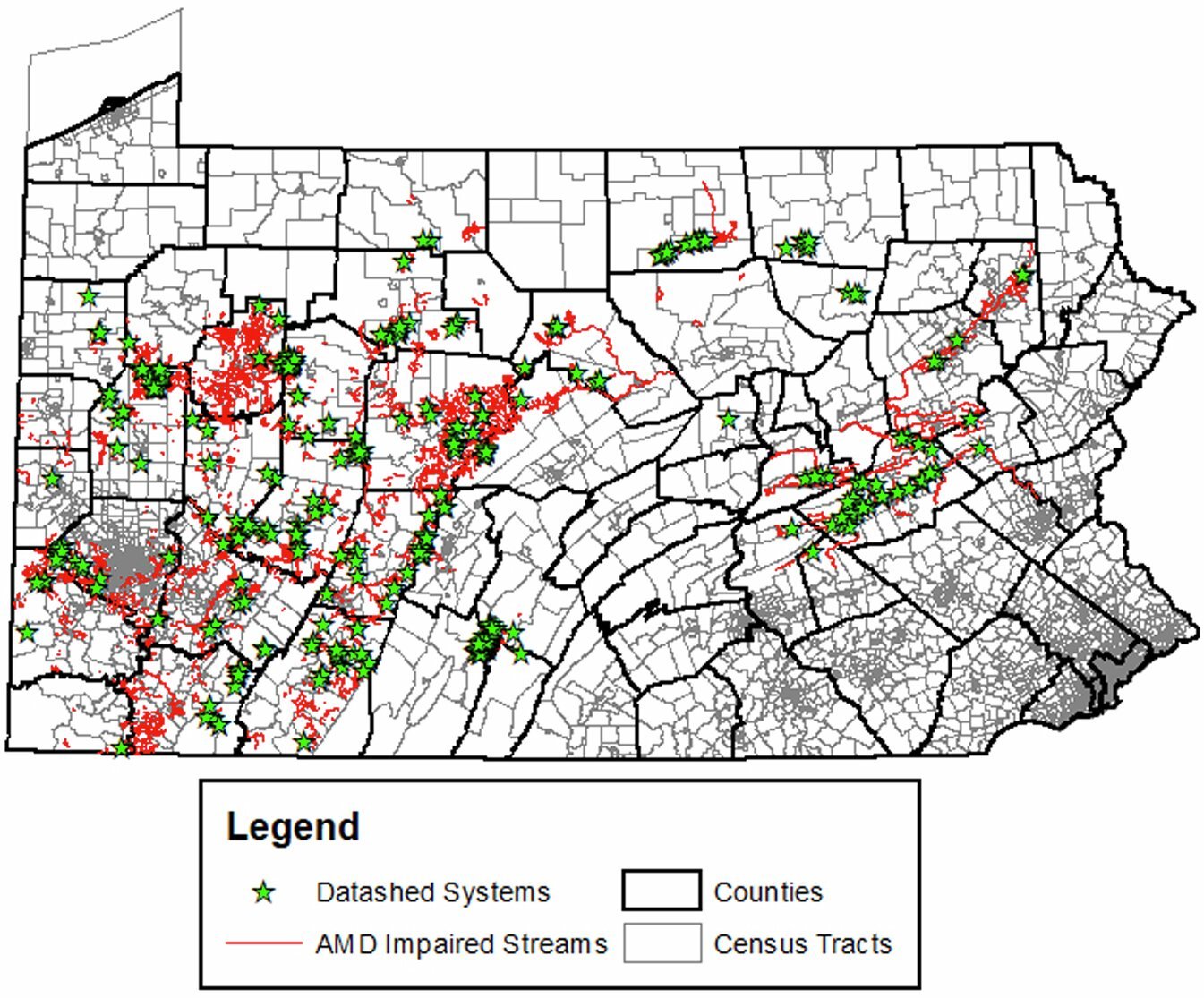
New research led by the University of Pittsburgh shows that state and federal appropriations allowing Pennsylvania to treat abandoned mine drainage works to both successfully and cost effectively clean up the acidic water—particularly to the benefit of affected vulnerable communities. But their research also shows that current appropriations to the state are insufficient for long-term treatment of all mine drainage while also needing to address other abandoned mine hazards such as sinkholes.
“In the past 35 years, the Pennsylvania Department of Environmental Protection and numerous watershed groups have built more than 300 systems using state and federal funding to treat mine drainage before it enters nearby streams,” said Jeremy Weber, a professor in Pitt’s Graduate School of Public & International Affairs.
Working with Kenyon College’s Katie Jo Black, Weber co-authored the research published in Communications Earth & Environment.
“Data from existing treatment systems shows that they protect more than 1,000 miles, or 1,500 kilometers, of streams and rivers from impairment by mine drainage. The systems have been relatively cost-effective, protecting streams for $5,700 per kilometer per year. However, the state has nearly 5,600 miles, or 9,000 kilometers, of impaired streams and rivers remaining.”
Weber, who researches the policy and economics of environmental and energy issues, noted how the transition from coal to newer, greener forms of energy has spawned funding toward the cleanup of legacy pollution, job retraining for displaced workers and other economic-development grants. Specifically, the 2021 Infrastructure and Investment and Jobs Act (IIJA) appropriated $16 billion to clean up abandoned wells and mines, where drainage can “stymie local economies,” the researchers said.
“Recent U.S. legislation provides a historic appropriation for addressing abandoned mine hazards such as acidic drainage that can turn a stream orange, kill its fish, and sicken people if they ingest it,” Weber said. “Who the investment will benefit and what it will accomplish has been unclear.”
To attempt to find answers, their research focused on Pennsylvania, which the co-authors said contains the most abandoned mine liabilities in the United States and is estimated to receive roughly one-third of the mine-funding prescribed in the 2021 IIJA.
They found specific communities vulnerable to the deleterious effects.
“Pennsylvania communities most exposed to mine drainage have incomes 30% below that of unaffected communities and are twice as vulnerable to the energy transition,” Weber said.
Some 2.4 million people, or roughly 18.5% of Pennsylvania’s total population, live in a community (or Census tract) with a stream impaired by abandoned mine drainage, the co-authors said. In many instances, the impairment is extensive, with 500,000 people living in a community where at least half of their streams are impaired. The researchers found that those communities most affected by mine drainage are also much less prosperous than unaffected communities, with household incomes about 30% lower and housing values 50% lower.
Using data to study 265 systems, the co-authors observed outflow water that is substantially better in quality than inflow water—illustrating that the systems are improving the quality of mine drainage on average before it enters nearby streams. For instance, inflow water had a 4.3 pH average, “roughly the acidity of tomato juice,” they wrote, where outflow averaged near 6 pH.
They estimated that nearly 6,500 miles (10,400 kilometers) of streams need protection from abandoned mine drainage, including nearly 1,000 miles, or 1,500 kilometers, with existing, aging systems. While cost-effective toward surface-water quality currently, the funding they computed for the next 25 years means that Pennsylvania will require $1.5 billion to repair what’s ahead, but will need another $3.9 billion to address liabilities that aren’t related to mine-drainage issues like sinkholes, highwalls, and opened mine shafts.
That means, the co-authors wrote, “the funds are less than half the amount needed.”
More information:
Katie Jo Black et al, Treating abandoned mine drainage can protect streams cost effectively and benefit vulnerable communities, Communications Earth & Environment (2024). DOI: 10.1038/s43247-024-01669-0
Provided by
University of Pittsburgh
Citation:
Study finds mine-drainage treatment cost effective, but far more costs lay ahead (2024, September 16)
retrieved 16 September 2024
from https://phys.org/news/2024-09-drainage-treatment-effective-lay.html
This document is subject to copyright. Apart from any fair dealing for the purpose of private study or research, no
part may be reproduced without the written permission. The content is provided for information purposes only.
